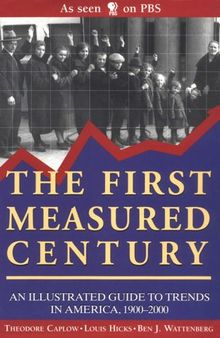 جزییات کتاب
جزییات کتاب
Most history tells the story of the past through anecdotes, but anecdotes do not always present an accurate or complete picture. There is another way to look at history. The rise of widespread, systemic data collection in the twentieth century -- the first measured century -- allows us to examine the past one hundred years with unprecedented clarity.Now, The First Measured Century, a comprehensive popular reference work, uses social data to tell us what happened to everyday Americans in the twentieth century. This myth-busting new history critically examines "imaginary trends": Do parents really spend less time with their children these days? Do people really move homes more often? Are Americans less likely to vote than they used to be? Whether the topic is politics, sexual behavior, economics, immigration, residence, housing, longevity, or public opinion, The First Measured Century shows that the facts often turn out to be more interesting than the fiction.A specially commissioned feature of The First Measured Century is original 1999 research that builds on Robert and Helen Lynd's landmark sociological study of the 1920s and the first city survey in America, "Middletown". (First Measured Century coauthor Caplow also led a team that reexamined the "Middletown" study in the late 1970s.) Therefore, The First Measured Century offers the longest time line of consistent attitudinal data anywhere. The authors use the survey data to display change and continuity in mid-America (Muncie, Indiana) and in dispel widely accepted notions about social change. One of the most important changes the new research shows is an erosion of social class differences -- in values, daily schedules,employment histories, housework, child raising, and aspirations for the future.This panorama of the American twentieth century unfolds in a series of key trends, each explained in a one-page essay written for the general reader and illustrated by one or more vibrantly colored charts on the facing page. The First Measured Century is an essential tool for anyone with an interest in journalism, economics, history, political science, sociology, demography, public relations, business, the arts, or policy. It is an ideal resource for students of all ages and their teachers or professors.



 دانلود کتاب
دانلود کتاب

 جزییات کتاب
جزییات کتاب

 این کتاب رو مطالعه کردید؟ نظر شما چیست؟
این کتاب رو مطالعه کردید؟ نظر شما چیست؟
